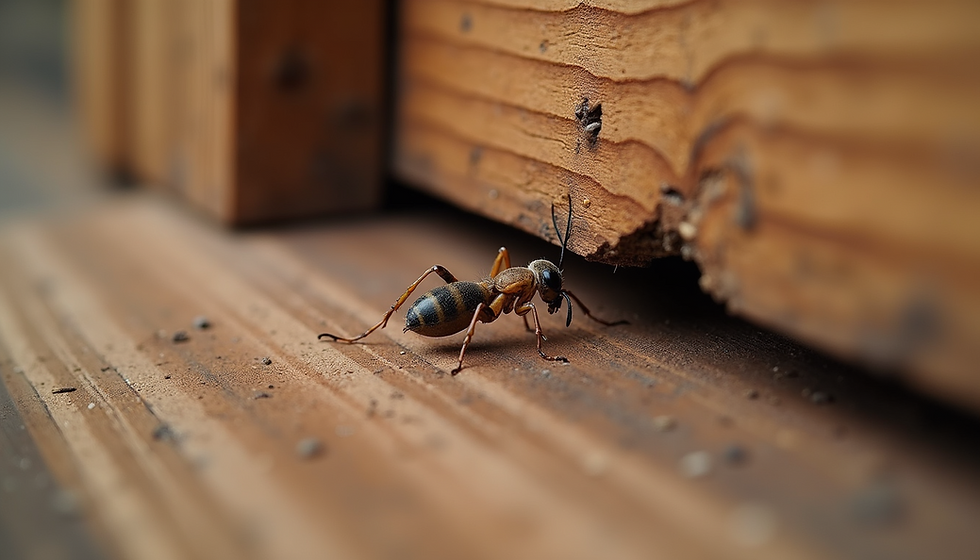Effective Strategies for Pest-Free Living
- Gorilla Pest

- Oct 27
- 3 min read
Living in a pest-free environment is essential for maintaining health, comfort, and property integrity. I have found that implementing effective pest management strategies requires a combination of prevention, monitoring, and timely intervention. This article outlines practical steps and methods to achieve a pest-free living space. These strategies are designed to be clear, actionable, and based on proven principles.
Understanding Effective Pest Management
Effective pest management involves a systematic approach to preventing and controlling pests. It is not merely about reacting to infestations but about creating conditions that discourage pests from entering and thriving in your home or property. This approach includes:
Identifying potential pest entry points and sealing them.
Maintaining cleanliness to remove food and water sources.
Using physical barriers and traps.
Applying chemical treatments only when necessary and in a targeted manner.
By focusing on these areas, I have observed a significant reduction in pest problems. The goal is to minimize reliance on chemicals and promote long-term pest resistance.

Practical Steps for Maintaining a Pest-Free Environment
To maintain a pest-free environment, I recommend the following practical steps:
Inspect and Seal Entry Points
Pests often enter through cracks, gaps, and openings around doors, windows, and foundations. Regular inspection and sealing of these areas with caulk or weather stripping can prevent entry.
Maintain Cleanliness
Food crumbs, spills, and garbage attract pests. Clean kitchen surfaces daily, store food in airtight containers, and dispose of trash regularly.
Manage Moisture
Many pests are attracted to moisture. Fix leaks, use dehumidifiers in damp areas, and ensure proper drainage around the property.
Proper Landscaping
Keep vegetation trimmed and away from the building. Remove debris and standing water where pests can breed.
Use Physical Barriers and Traps
Install screens on windows and doors. Use traps for rodents and insects to monitor and reduce populations.
These steps form the foundation of effective pest management and help reduce the need for chemical interventions.
What Does Pest Control Mean?
Pest control refers to the methods and practices used to manage and eliminate pests that pose a threat to health, property, or comfort. It encompasses a range of techniques, including:
Biological control: Using natural predators or parasites to control pest populations.
Chemical control: Applying pesticides in a controlled and targeted manner.
Cultural control: Modifying the environment to make it less hospitable to pests.
Mechanical control: Using physical means such as traps, barriers, or manual removal.
Understanding these methods allows for informed decisions about which strategies to employ. I emphasize integrated pest management, which combines multiple approaches to achieve sustainable results.

When to Seek Professional Assistance
While many pest issues can be managed independently, some situations require professional expertise. I advise contacting a professional when:
The infestation is extensive or persistent.
The pest species is dangerous or difficult to identify.
Chemical treatments are necessary but require safe application.
You want a comprehensive inspection and customized management plan.
Professional services offer specialized knowledge, tools, and products that are not readily available to the general public. For reliable and effective pest control, engaging a licensed provider ensures safety and efficacy.
Long-Term Strategies for Sustainable Pest Prevention
Sustainable pest prevention involves ongoing efforts and adjustments. I recommend the following long-term strategies:
Regular Inspections: Schedule periodic checks of your property to identify and address potential pest issues early.
Education: Stay informed about common pests in your area and their habits.
Community Cooperation: Work with neighbors to manage pests collectively, especially in shared environments.
Record Keeping: Maintain records of pest sightings, treatments, and outcomes to track patterns and improve management.
By adopting these strategies, pest problems can be minimized over time, reducing the need for emergency interventions.
Final Thoughts on Maintaining a Pest-Free Home
Achieving and maintaining a pest-free living space requires diligence and a proactive approach. I have found that combining preventive measures with timely action and professional support when needed creates the most effective pest management system. Remember to focus on eliminating attractants, sealing entry points, and monitoring regularly. When chemical treatments are necessary, use them responsibly and as part of an integrated plan.
By following these guidelines, you can enjoy a healthier, safer, and more comfortable environment free from the disruptions caused by pests.


